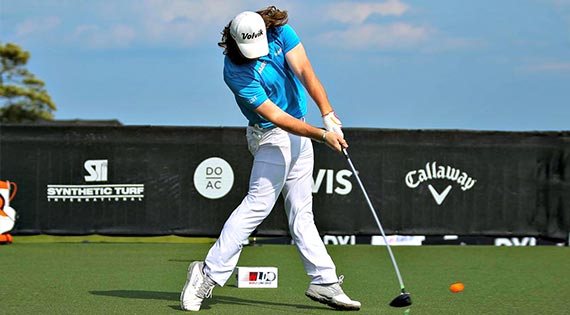This article is co-written with Marnus Marais. Since 2011, Marnus has worked with some of the world’s best players on both the PGA Tour and European Tour, helping them to maintain optimal health and peak physical performance. His current stable of players includes Dustin Johnson, Patrick Cantlay, and Louis Oosthuizen, amongst others.
You can find more information on Marnus and his work at marnusmarais.com
Following on from Part 1 of this article, we examine reasons 4, 5 and 6 for why golfers suffer from low back pain.
Reason 4 - Weak Core Muscles
Before we make start making exercise recommendations for this complicated area of the body, it's worth asking .... what is the core exactly? There is considerable debate about this often misunderstood region. Back pain expert Professor Stuart McGill, explains it as follows:
‘The core is composed of the lumbar spine, the muscles of the abdominal wall, the back extensors, and quadratus lumborum. Also included are the multijoint muscles, namely, latissimus dorsi and psoas that pass through the core, linking it to the pelvis, legs, shoulders, and arms. Given the anatomic and biomechanical synergy with the pelvis, the gluteal muscles may also be considered to be essential components as primary power generators’
In a golf context, there is a common myth that the core muscles are our main source of power in the swing. In reality, the main role of the core is to provide stiffness and a stable support for force/power transfer from our legs to our upper body
If we can create stiffness and stability in our core, we can help protect our spine and surrounding structures from unnecessary strain whilst also improving swing efficiency - pretty sweet combo!
Due to a combination of perpetual sitting, poor posture and other detrimental lifestyle factors, our cores tend to lose this ability to provide stiffness and stability. We can combat and correct this with a solid core conditioning program. Below are examples of some of our favourite exercises.


Dead Bug with Fitball - the combination of squeezing the fitball whilst extending arm and leg delivers all sorts of great stimulus for the core muscles.

Bird Dog - great for glute, core and back strength

Pallof Press - fantastic anti-rotation exercise. Good for strengthening the core whilst using the ground efficiently
Reason 5 - Not Warming up Properly / Not Warming up at All!
As we’ve explained above, mechanical back pain arises from too much stress and strain placed on the back. During the game of golf, we treat our spines terribly - expecting them to twist, turn and contort with the aim of producing decent golf shots!
If we don’t prepare our bodies for an activity like golf and just go out cold, we significantly increase the chances for strain and stress being placed on the lumbar area.
I’m sure many of you have had the experience of throwing a ball or a stick hard without warming up, and received a nasty sharp pain in your shoulder. Now, if you were to warm up before doing that; stretching your shoulder, making a few practice throws etc, you'd likely avoid strain altogether. Same goes for the low back and the golf swing - without a decent warm up, there's every possibility of a strain when trying to rip driver down the first!


By incorporating a warm-up into your pre-golf routine, you can significantly reduce the risk for injury AND help avoid that card wrecking double-double start! As a side bonus, warming up regularly can help your general health, fitness and well being too.
We know that most amateurs don't warm up; a study done by Fradkin et. al showed that around 70% of amateur golfers seldom warm up, with only 3.8% reporting warming up on every occasion!
A decent warm isn't hard and doesn’t have to take ages to complete; research shows that a warm-up of 10-20 minutes is sufficient. In the video below, Marnus gives a thorough guide to a solid warm up sequence.
Reason 6 - Swing Faults
Lets not forget the golf swing. One of the most common reasons I see golfers struggle with low back pain is that they are unable to "get to their lead side" and "get stuck" on the downswing. This causes the afore mentioned excessive side bend and rotation from the low back, which we need to avoid!

Now we aren't golf coaches and therefore don't deliver swing advice. However, there are some fundamental movement patterns that most golfers could benefit from practicing. In the videos below, one of our favourite body orientated swing coaches, Richard Woodhouse, is using one of our favourite training tools, the GravityFit TPro, to help teach an efficient movement pattern. The aim is to develop a strong connection between arms and body, using the hips and thorax to rotate, thereby helping to avoid "getting stuck"
Summary
Absolute best practice for a healthy golfing lower back is working with a golf swing instructor and also a health / fitness professional that understands the body and swing connection. As a team they would be able to identify and improve your individual swing faults, movement pattern dysfunctions, range of motion deficiencies, muscle weakness, imbalances, and alignment issues.
If you don’t have access to such expertise locally, you may want to check out the online services offered by Marnus here:
Marnus - https://www.marnusmarais.com
If you would like to access training programs designed for elite and recreational players, then check out the following products and services from Nick at Golf Fit Pro:


Leave a comment